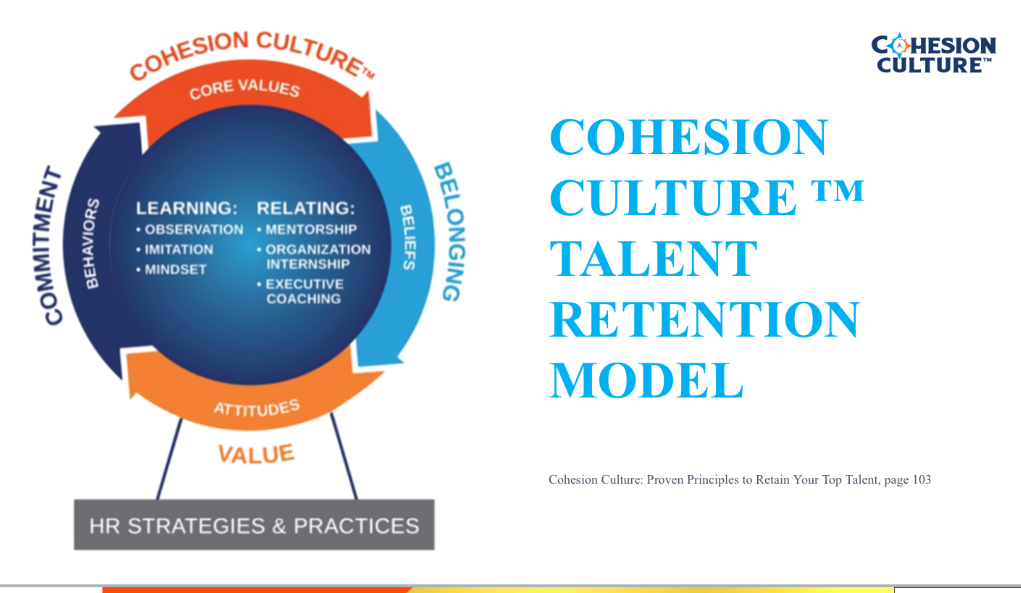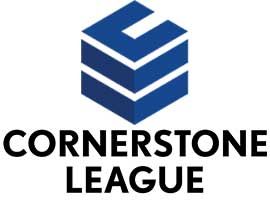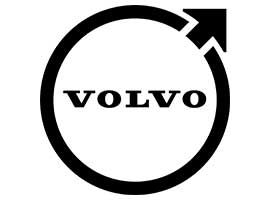
Two-Prongs are Better than One
This is Blog #3 in my Cohesion Culture™ Talent Retention Model blog series. If you haven't already done so, click here to check out the first in the series and/or click here to read the second in the series.
In this edition of Cohesion Corner™ with Dr. Troy, we dive into the crucial step of implementing Learning within the Cohesion Culture™ Talent Retention Model. These steps build on the foundational concepts discussed previously and are essential for creating a dynamic and supportive workplace environment.
You’ve heard the expression “two heads are better than one.” The two-pronged “Learning and Relating” are the key activities within an organization that impacts performance and engagement. Both approaches serve as companions for each other. Think of them as interdependent, meaning they have a relationship to each other, but they are not sequential.
]In fact, quite often these two approaches and their respective components work in an integrated fashion ebbing and flowing from one to the other. There is so much more packed into learning than room for in this article.
To get you started, here is a quick refresher of the 5 aspects of a learning organization and the people who subscribe to life-long growth and development:
- Be generative - learn new things not just for the sake of gathering information, but for the intention of putting in use. I realized early on the importance of looking for knowledge that can be used for tomorrow as well as today.
- Apply adaptability - for me, it’s a matter of being intentional and positive towards change.
- Experiment often - refer to the section below titled: “The Sixteen-million Dollar Lab.”
- Seek diversity of thought - this has been a powerful aspect in my life. Coming from a small, economically challenged town in West Virginia, my mom aka FANNY instilled in me the value of listening to the voices of trusted advisors and those who have already traveled the path I sought to be on. I have applied this piece of wisdom in my travels and interactions with people from different cultures, sexual orientations, and faiths.
- Serve as good stewards and teachers of the resources and knowledge that is given and/or earned.
Learning and Relating: A Two-Pronged Approach

Once the concept of how values, beliefs, attitudes and behaviors interact with each other and the three strategic elements of cohesion are in place, the next steps are to implement the key pieces of learning and relating of the Talent Retention Model.
Learning
Learning is the part of the model responsible for gathering information, absorbing it, thinking about it, and testing its ability to stand up in an argument or debate. It’s what the employee learns that can be put to use. This process is circular and allows for the continual development of staff, meaning that individuals who are learning are in a constant state of acquiring new information. Once they have determined its value, either discarded or absorbed, they are ready to replicate the process. Though I explain this in a linear fashion, the process is dynamic. Our brains process information at a very quick rate and make determinations about its relevance and then repeat the process. This is exactly how you are interacting with the information in this book. You are trying to make sense of the new information, evaluating it based on what you may already know and hopefully on where you want to take your employees and the organization.
I think of the learning process as though all the information you receive is water. Operating on a continuum from sponge to rock, people need to decide where to be. Sponge or rock? Generally, most people want to be a sponge and soak up all the information they can because they know information is powerful and can help them make well informed decisions. However, there is nothing wrong with being a rock. Sometimes we come in contact with information that is simply not beneficial, and it is my advice that you let it roll off you, exactly how water interacts with a rock. Throughout the learning process, people often reflect many stages of acceptance on the “sponge to rock” scale.
Part of the learning process must include experimentation, one of the primary tenets of the learning organization. The environment in which individuals operate must be safe. There must be room for error. Leaders are encouraged to foster an environment for individuals to be honest even when they make mistakes. If those mistakes aren’t forgiven, the learning ability and growth of both the individual and the organization will be greatly diminished. When learning is suppressed or halted, people cannot move forward. To sum up how I feel about learning, “You don’t have to know everything; you just need to be teachable.”
The learning prong has three main components:
- Observation. People learn in a variety of ways. Observation plays the largest role in a Cohesion Culture because people are more likely to imitate what they observe versus what they read or hear. The old adage rings true: “A picture is worth a thousand words.” As an individual experiences and learns firsthand, they take into account three elements: they evaluate what they hear, touch and see within a scale of personal assessment and congruency. This is why building effective leaders and putting the right culture in place is necessary. People who are committed to learning will seek new information from both written and auditory sources. The greatest impact comes from what the individual observes. They will ask, “Does this make sense to me? Is it valuable? Can I adopt these actions for my own?” If the answers are affirmative, individuals are more likely to take that information and think of ways to adopt it.
- Imitation. As individuals make sense of their observations, they experiment by imitating. It is a form of testing the waters to see how it feels and how others will react. A leader must ensure his behavior is worthy of being imitated by those who see it. When people imitate or experiment, they develop a level of comfort and make the new action their own. Once the individual is comfortable with the new behavior, it becomes part of them. This is how people take ownership of what they have learned.
- Mindset. Throughout this book, there has been considerable information on establishing the mindset of the leader. Aligning the mindset of all the people within the culture is necessary to ensure cohesion. As the leader focuses on the five mindsets presented in Chapter 2, the employee’s mindset or attitude toward learning should be one of accepting change as part of ongoing development and advancement. How the individual thinks about information, its value, importance, and relevance will shape how quickly the Cohesion Culture™ comes into place. And it will contribute to how effective leaders are at keeping it in place.
To support the learning prong of the talent retention model, many organizations offer a learning and teaching online university program. This robust onsite learning platform includes computer based training systems as well as classroom training and is supplemented from outside the four walls of the organization with certifications and partnership studies at technical schools, colleges, and universities.
The Sixteen-Million-Dollar Lab
Experimentation is part of learning—a process to try new ideas without the fear of failure. Experimentation is generally best when those conducting experiments are cautious—not cautious to avoid mistakes, but cautious to avoid blowing up a laboratory.
Jack Welch , former CEO of General Electric, and his wife, Suzy Welch, wrote the book Winning in 2001. In the section dedicated to experimentation, Welch writes that as a young leader, he was responsible for a sixteen million dollar lab that blew up! When he was called into the CEO’s office, he assumed he’d immediately be fired, so he rehearsed his resignation. The best he could hope for was to leave the company on his own terms. As Jack fumbled through his speech, the CEO cocked his head and asked, “Jack, what are you talking about?” Sheepishly, Jack offered, “I thought you were going to fire me because I blew up the lab, and I was trying to find a way to resign.” Sternly the CEO responded, “Are you kidding me? I just paid sixteen million dollars to train you. I’m not about to let you go now.”
Clearly, getting a little soot on your nose the first time you clean a chimney is a lot different than losing sixteen million dollars. All the same, it is important that the leader and the organization have an experimental approach to finding innovative solutions that meet the needs of the talent.
Although most companies could not sustain that type of loss, it was clear the CEO understood the value of experimentation and its impact on learning. It is through learning that individuals move toward aspirations of growth and development. Learning is the companion for the second prong, relating.
Make sure to subscribe to Cohesion Corner™ with Dr. Troy as the next newsletter will cover the Relating side of the prong.
To learn more,click here to purchase your very own copy of my book Cohesion Culture: Proven Principles to Retain Your Top Talent.
For more insight on this topic, please refer to these blog posts:
- Employee Retention Model... Runway Ready and More
- The Importance of Core Values
- Engagement is Out. Cohesion is In.
- When Culture Is Broken
Interested in reading more from Dr. Troy Hall? Check out my books available for purchase on Amazon.






